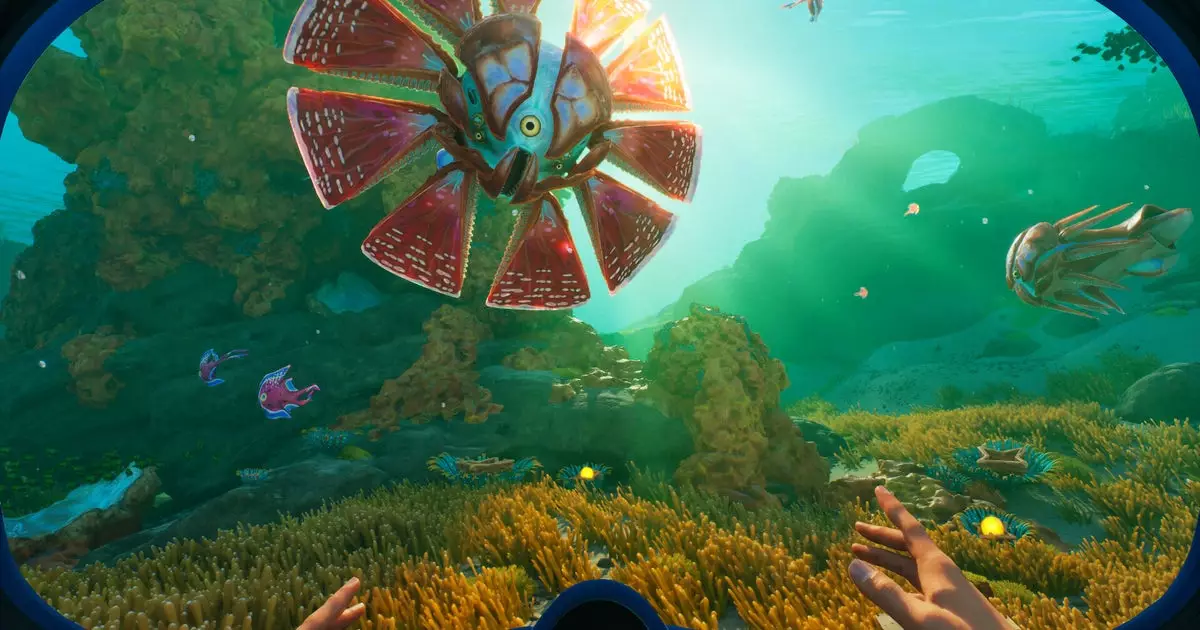The underwater landscape of video gaming is set for another thrilling exploration with the impending arrival of Subnautica 2. Emerging from the depths of the imagination of Unknown Worlds, this sequel promises to build upon the immersive experience that captivated players in its predecessor. With the announcement of its early access launch scheduled for next year, excitement swells like the tides, foreshadowing a return to the oceanic nightmares and wonders that players have come to cherish. But as anticipation builds, it invites critical reflection on the evolving nature of game development and player expectations.
Subnautica 2’s entry into early access represents a pivotal moment in the game development lifecycle. Not only does this model allow players to engage with the game before its full release, but it also provides developers with invaluable feedback. However, consumers should temper their enthusiasm with the reality that early access games can often be rough around the edges. Developers have stated that they foresee this phase potentially extending until 2027 or 2028, offering a timeline that suggests a robust, multifaceted experience may emerge from these depths. The inclusion of multiplayer modes, multiple biomes, and a scattering of narrative elements indicate a significant expansion of the gameplay loop, merging social interaction with solitary exploration.
Despite the promise, optimism should be accompanied by skepticism. Early access is fraught with the potential for players to encounter bugs, balance issues, and incomplete narratives. While the development team encourages player feedback to shape the future of Subnautica 2, the challenge remains: how can they prioritize user input while maintaining their creative vision? As players dive in, the responsibility lies with both the gaming community and developers to navigate the waters of collaboration skillfully.
One of the most pressing questions surrounding Subnautica 2 is how the introduction of multiplayer will affect the single-player experience. The tension between cooperative gameplay and solo survival ensures a delicate balance must be struck. Developers have hinted at a concern that player complaints may arise if perceived difficulties or resource distribution issues suggest a design tailored more towards multiplayer interactions. Will the thrill of solitary exploration suffer in favor of a shared experience?
Unknown Worlds faces the task of meticulously integrating multiplayer elements without undermining the identity of the solitary survival genre. Players who found solace in the eerie ambiance of the deep sea might hesitate to welcome additional voices into their underwater domains. The interactions of players and creatures in a shared universe could dilute the haunting isolation that made the first game a classic. Effective communication of these design choices, both pre-launch and throughout the early access period, will be pivotal in shaping player reception.
The original Subnautica is celebrated not only for its visual beauty and exploration but also for its inherent ability to elicit fear—something that was unexpectedly magnified during early access. The developers responded to community reactions and critiques, altering gameplay to drive home the terrifying encounters that turned gameplay into an authenticity of fear and tension. Many players thrived on these precarious interactions with creatures like the Reaper Leviathan.
With the experience garnered from not just the original installment but also its expandalone, Below Zero, there exist lessons in both what to embrace and what pitfalls to avoid. Although Below Zero garnered mixed responses, it was yet another step in the evolution of its fearsome underwater universe. As Unknown Worlds charts the course for Subnautica 2, it will be fascinating to observe how they leverage past experiences to navigate player expectations while creating a fresh narrative journey.
Subnautica 2 is not just another sequel; it has the potential to redefine what we understand about the genre, weaving together survival mechanics, community input, and the haunting allure of the ocean’s depths. The developers urge players to participate in shaping their journey, a call that resonates deeply in an age where gaming experiences are increasingly collaborative. The balance of fear, exploration, and social interaction promises to make Subnautica 2 a formidable entry in the genre—if successfully navigated.
As the calendar pages turn toward the early access launch, the waters become charged with potential. With a spirit of collaboration and creativity, both players and developers will hold the nautical compass, steering towards uncharted adventures. The journey beneath the waves awaits, and it’s one to which many will eagerly plunge headfirst.


Leave a Reply
You must be logged in to post a comment.